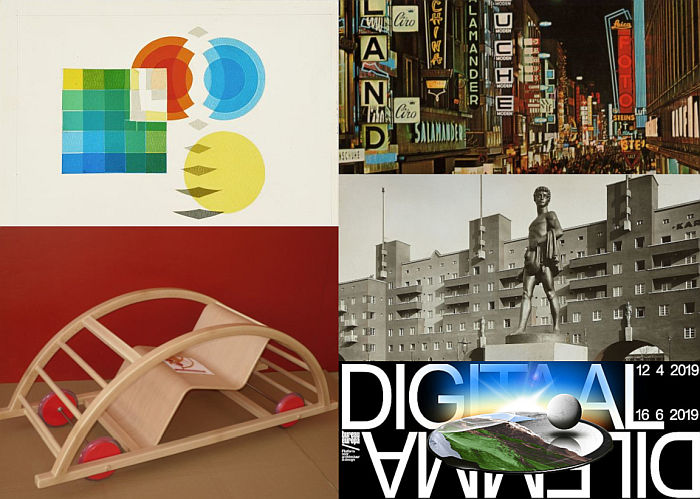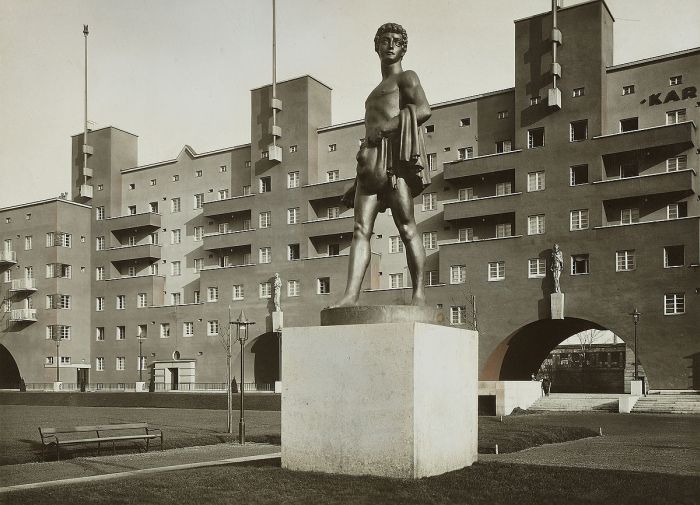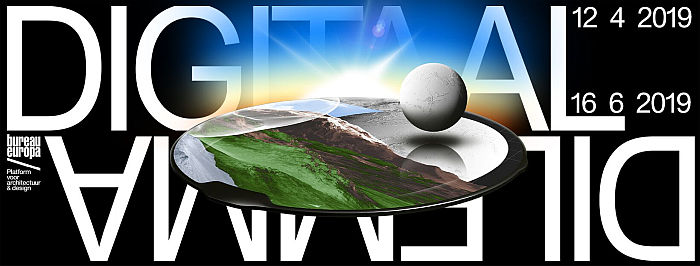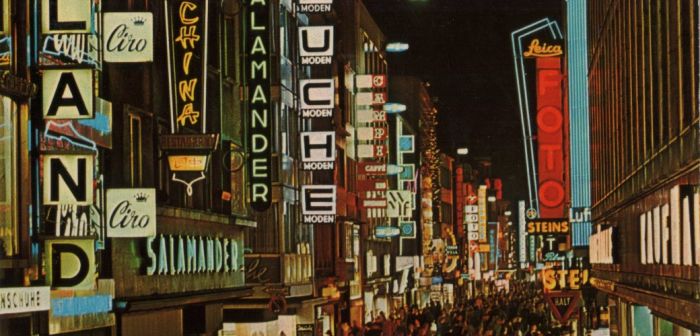5 New Architecture & Design Exhibitions for April 2019
From you have I been absent in the spring,
When proud-pied April, dressed in all his trim,
Enticed us into the following architecture and design exhibitions…….
William Shakespeare, Sonnet 98, From you have I been absent in the spring (extended, with apologies)
“Bauhaus_Sachsen” at the Grassi Museum für Angewandte Kunst Leipzig, Germany
When in 1925 it became clear that Bauhaus would have to leave Weimar, Leipzig was one of the city’s to offer it a new home; as history records Walter Gropius accepted the offer from Dessau and thus Bauhaus remains something which bordered the German State of Sachsen. If something with very close links to Sachsen, something to which Sachsen contributed, which Sachsen influenced, and which influenced Sachsen. As the exhibition Bauhaus_Sachsen aims to explore.
Promising an exploration of the links, contributions and influences through seven thematic areas, including “Bauhaus Stage” with its focus on the Limbach born artist, Kurt Schmidt, “Bauhaus for Industry”, including lighting designs created by Bauhäusler for Leipzig based manufacturer Kandem or furniture for the Deutschen Werkstätten Hellerau, “Bauhaus Products at the Grassimessen” which focuses more closely on the museum’s own direct relationship to the school, or “Sächsische Bauhäusler”, which is just the most perfect grouping of letters, and which will highlight the likes of Marianne Brandt, Hajo Rose or Franz Ehrlich. In addition Bauhaus_Sachsen will present a series of specially commissioned works by contemporary creatives via which the museum aim to build a bridge from then to now and thus, hopefully, allow for a discussion on the contemporary relevance of the school and its ideals. In Sachsen and beyond.
Bauhaus_Sachsen opens at the Grassi Museum für Angewandte Kunst, Johannisplatz 5-11 04103 Leipzig on Thursday April 18th and runs until Sunday September 29th.
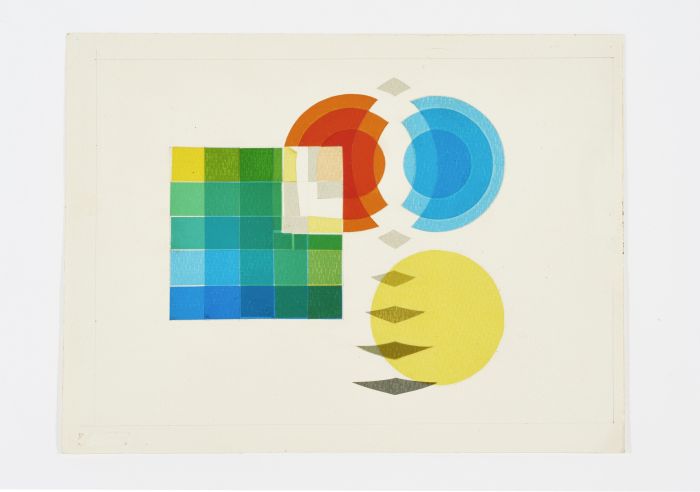
Foliencollage auf Karton by Hajo Rose, part of Bauhaus_Sachsen at the Grassi Museum für Angewandte Kunst, Leipzig
“Das Rote Wien 1919-1934” at the Wien Museum MUSA, Vienna, Austria
Among the myriad attempts to respond to the political, economic and social changes in Europe following the Great War, that in Austria, specifically that in Vienna, stands as a very singular example: and one that is regularly overlooked by a popular view of the period that tends to concentrate on Germany.
And that despite the fact that through creating between the wars some 60,000 new homes, and thus, for example, five times what was achieved in Frankfurt, would tend to indicate it should be better understood.*
Popularly known as Rote Wien, Red Vienna, on account the socialist government of the post-Habsburg city, the inter-War years saw a wide palette of reformist civil and social programmes introduced as the authorities, and Viennese themselves, sought to find an way through the new realities.
Promising to explore the period not just in context of what was realised, but the political and economic background to that which was realised, the international reaction and exchange to and of that which was realised and the question of what contemporary urban planning, architecture and civil society can learn from such, Das Rote Wien 1919-1934 also promises to provide for not only a fulsome exploration of the subject, but also a very welcome addition to the contemporary discussions of inter-war architecture, art and design
Das Rote Wien 1919-1934 opens at the Wien Museum MUSA, Felderstraße 6-8, 1010 Vienna on Tuesday April 30th and runs until Sunday January 19th
* Yes the timeframes are different, but if taken on yearly averages Vienna was more productive then Frankfurt
“Shaping everyday life! Bauhaus modernism in the GDR” at the Dokumentationszentrum Alltagskultur der DDR, Eisenhüttenstadt, Germany
In many regards East Germany should have provided a perfect, post-War, post-Nazi, home for Bauhaus. The DDR had (almost) all the buildings, numerous protagonists, and an ideological need for standardised, democratic objects; but, and arguably because being as it was East Germany, Bauhaus wasn’t welcome. Or not initially.
With their exhibition Shaping everyday life! Bauhaus modernism in the GDR the Dokumentationszentrum Alltagskultur der DDR aim to not only explore the complex and, at times, capricious, relationship between Bauhaus, Bauhäusler and the East German state, but also explore 20th century design in East Germany in context of Bauhaus and the principles developed at the school and by it staff/students.
To this end the museum promise an exhibition of not only objects from manufacturers such as Deutschen Werkstätten Hellerau, VEB Plasta Preßwerk Auma or Simson, and creative such as, and amongst many others, Margarete Jahny, Karl Clauss Dietel and Selman Selmanagić, but also discourses on subjects such as the Formalism Debate of the early 1950s, industrialised construction in the DDR or the 1988 exhibition Experiment Bauhaus in Dessau as an act on the path towards German unification.
And thereby promises not only to allow for a differentiated view on the Bauhaus legacy and of the history of the DDR, but also understandings of those everyday objects created in the DDR.
Shaping everyday life! Bauhaus modernism in the GDR opens at the Dokumentationszentrum Alltagskultur der DDR, Erich-Weinert-Allee 3, 15890 Eisenhüttenstadt on Sunday April 7th and runs until Sunday January 5th
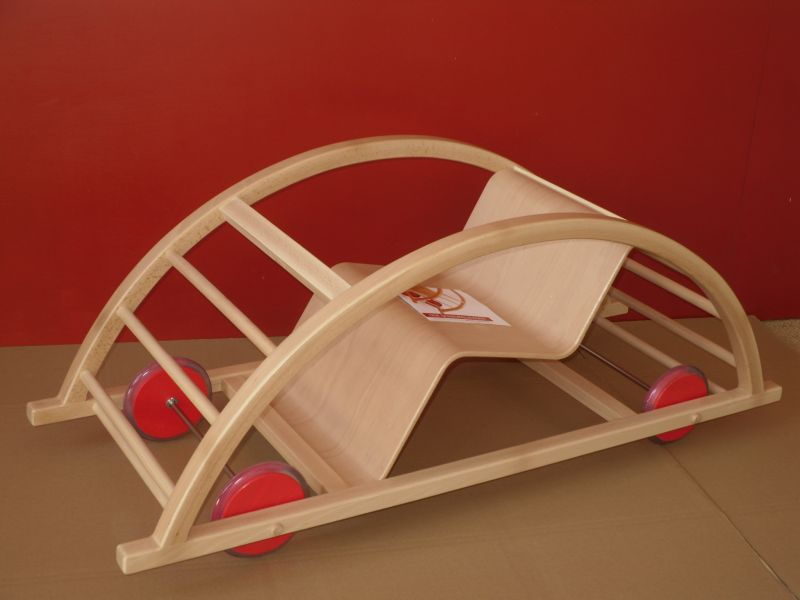
Schaukelwagen by Hans Brockhage and Erwin Andrä, part of Shaping everyday life! Bauhaus modernism in the GDR at the Dokumentationszentrum Alltagskultur der DDR, Eisenhüttenstadt
“Digital Dilemma – The Architecture of Trust” at Bureau Europa, Maastricht, Holland
In an age in which digital technologies are increasingly superseding established civil structures, and that in a manner which poses serious question of not only their suitability for the job but the longer term consequences of such, Bureau Europa promise a collection of art, design and architecture projects which question and respond to the place, role and function of digital technology in contemporary society. And promises to do so from that most contemporary of positions: the conspiracy theory.
Arguably driven by both the increasing opaqueness that the limitlessness of digital technology offers and, and paradoxically, the more democratic access to information the internet allows, the conspiracy theory is today, as the curators note, “no longer the preserve of groups on the peripheries of society”; and more worryingly threatens to become the norm, something against which democratic structures and institutions will continually have to battle in order to exert their legitimacy.
A situation which can, arguably, only change, when we are all better placed to understand the role and function of digital technology in our daily lives and therefore not only able to better understand and process the consequences of our digital realities but also take responsibility for our digital futures. Digital Dilemma sounds like helping us move towards just such a position.
Digital Dilemma – The Architecture of Trust opens at Bureau Europa, Timmerfabriek, Boschstraat 9, 6211 AS Maastricht on Friday April 12th and runs until Sunday June 16th
“Must Have. Historic, Contemporary, Future Consumption” at LVR-Industriemuseum Kraftwerk Ermen & Engels, Engelskirchen, Germany
If we follow the position of the American economist and sociologist Thorstein Veblen, then, “unproductive consumption of goods is honourable, primarily as a mark of prowess and a perquisite of human dignity; secondarily it becomes substantially honourable to itself, especially the consumption of the more desirable things.”*
The more desirable things, the Must Have, as definer of position, authority and respectability. Consumption as an end to a means and a defining cultural act.
Promising some 400 objects Must Have. Historic, Contemporary, Future Consumption aims to provide for an exploration of not only the practices and rituals of consumption from the pre-industrial age until our own, nor only the changing nature of that which we consume and the cultural, social and economic significance of consuming, and that which we consume, but also promises to allow for critical reflection on the consequences of our contemporary consumption society and how possible future consumption could, should?, be organised
Whereby one of the big questions is if we as a species can get over our egoistic understanding of “Must Have”. Of the Must Have, as definer of position, authority and respectability. Consumption as an end to a means and a defining cultural act?
If we can follow the position of the American economist and sociologist Thorstein Veblen….
Must Have. Historic, Contemporary, Future Consumption opens at LVR-Industriemuseum Kraftwerk Ermen & Engels, Engels-Platz 2, 51766 Engelskirchen on Sunday April 7th and runs until Sunday October 27th.
* Thorstein Veble, Conspicuous Consumption, Penguin Books, 2005
Tagged with: Bauhaus, Bauhaus_Sachsen, Das Rote Wien, DDR, Digital Dilemma, Eisenhüttenstadt, Engelskirchen, Grassi Museum for Applied Arts Leipzig, Leipzig, LVR-Industriemuseum, Maastricht, Vienna, Wien
